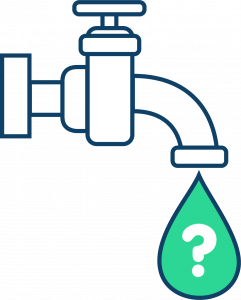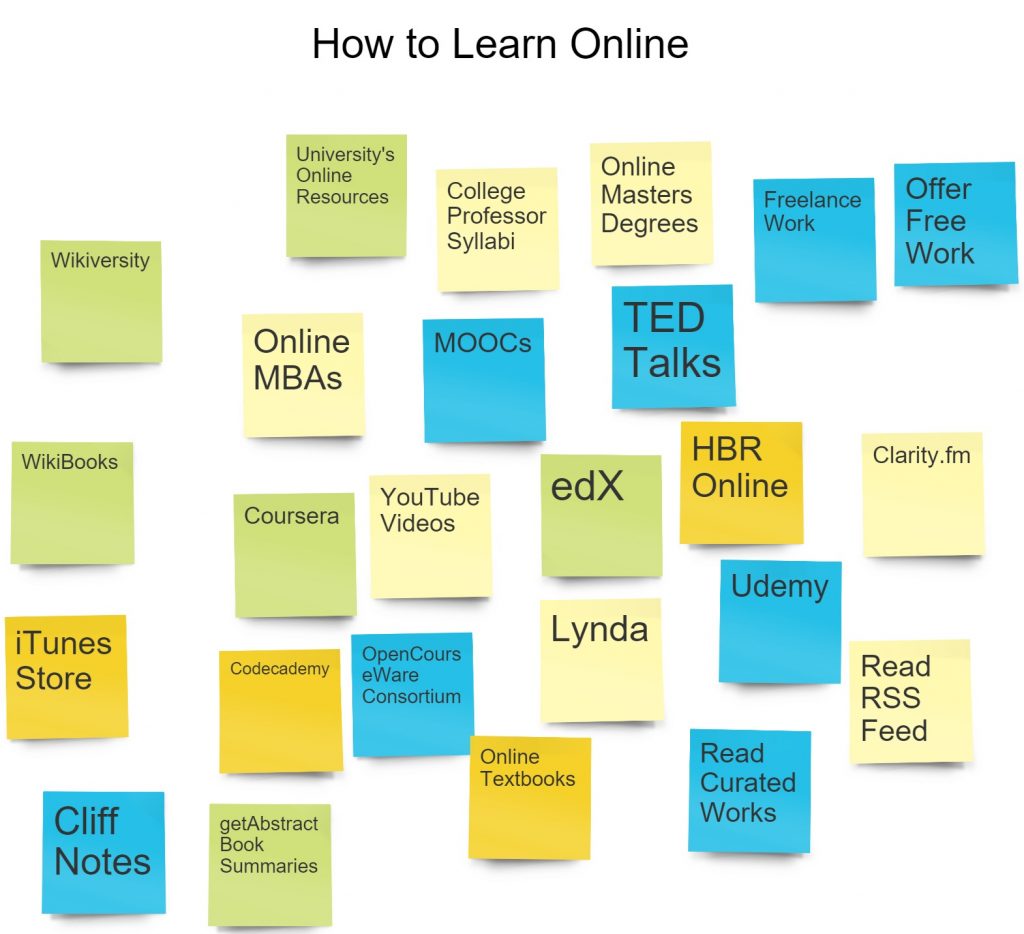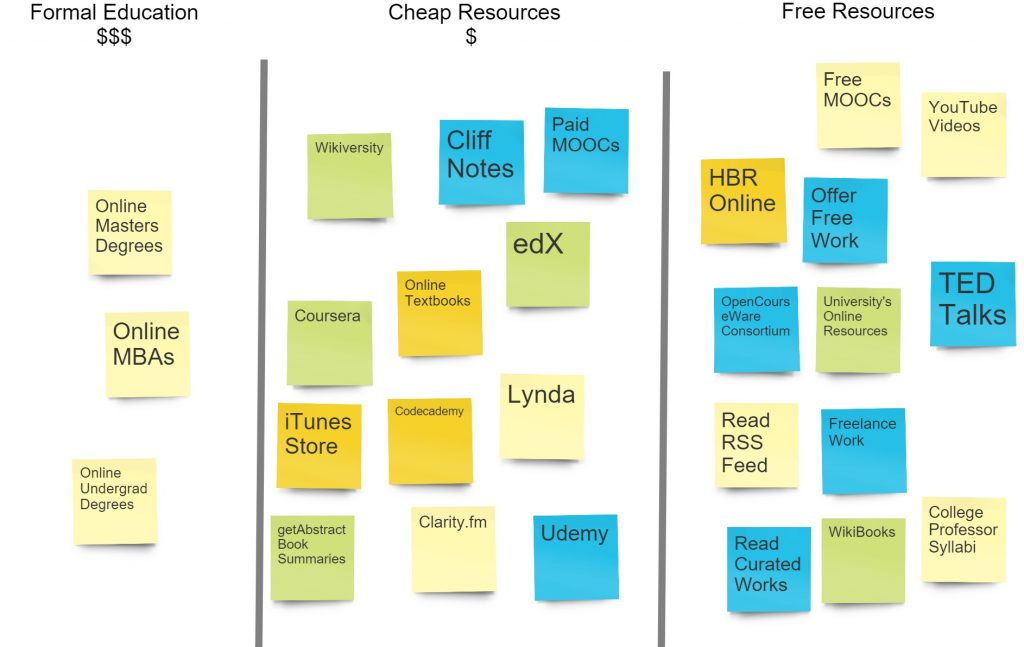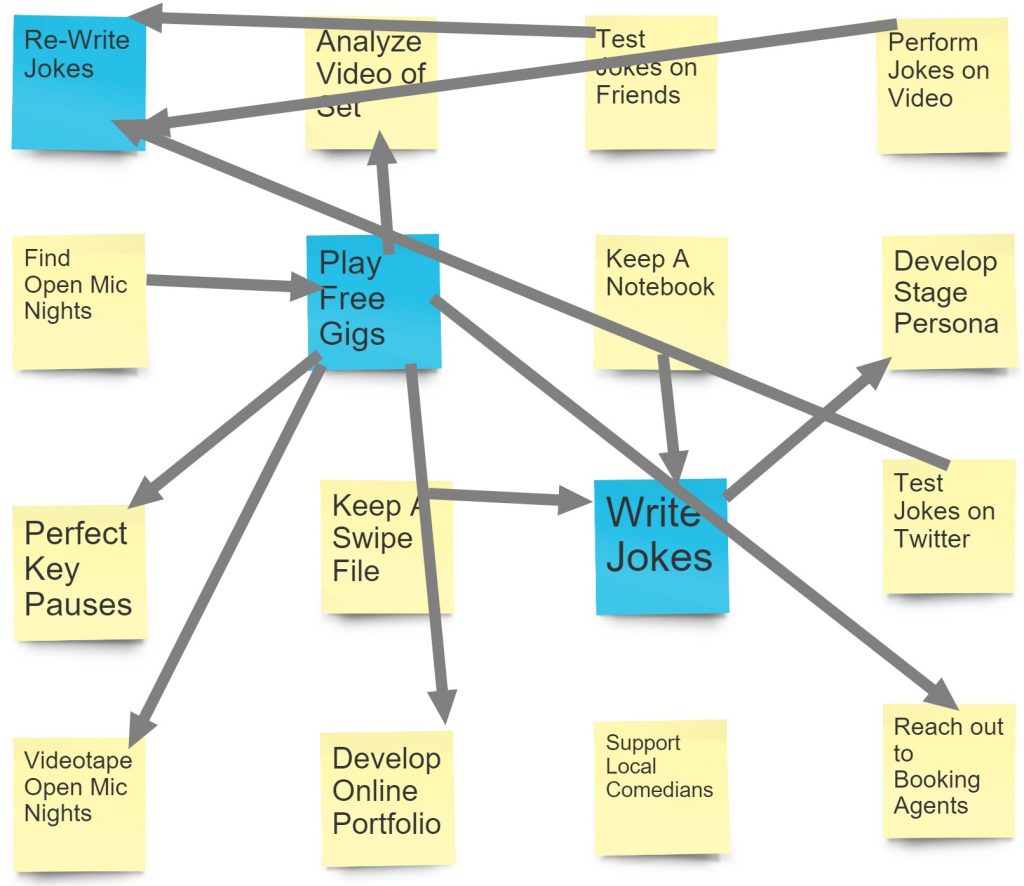This article is repurposed from our new book, “The Content Marketer’s Guide to Ideation.” This massive 187-page guide is available free as a PDF (get it here), and is also available in Kindle and paperback.
Sometimes you need to produce a lot of new content ideas, fast. You have a documented content strategy, a list of topics, and you and/or your team are well-equipped with personas, research and data-points. You need a way to funnel all of those ideas trapped in you and your team member’s heads into one place.
The seven exercises in this article can be used to generate dozens of ideas, all within a 30 minutes time frame. There’s no need for back-and-forth emails, a Slack channel, or serendipitous lightbulb moments. These exercises are all about forcing content ideas out.
Several of the exercises use quotas to ensure that meeting participants keep their minds moving and not satisfied with their output. While searching for ideas, the human mind defaults to looking for the single best one before shutting down the search. By setting a quota, you can overcome that problem. Keep that in mind while using and adapting these exercises for your own needs.
- 10-20-30
- Post-Up
- Affinity Mapping
- Information Mapping
- Group Brainmapping
- 6-3-5 Brainwriting
- Poster Session

1. 10-20-30
When participants are knowledgeable and well researched, ideation can be as simple as giving them the channel to unleash their ideas. 10-20-30 is a great game for generating a large raw number of ideas in a short time span. It can also be used to as a warm up for another group ideation exercise.
The Exercise:
- Give your team two minutes to brainstorm 10 ideas. Keep a timer, give them a warning when time is running out, and stop them at exactly the two-minute mark.
- Give them four minutes to brainstorm 20 ideas.
- Give them six minutes to brainstorm 30 ideas.
From end to end, you should have developed 60 ideas in 15 minutes of meeting time. Of course, you’ll want to make sure your team isn’t walking unprepared into the meeting. Give them research, strategy, and prompts before going into the meeting.
You can also use this pragmatic exercise to kick off a longer-form ideation meeting. Schedule a meeting for an hour, then start with this exercise. If you generated a lot of good ideas, then stop the meeting after completing 10-20-30. If you didn’t, it’s likely that you need to revisit your topics and find new ones, or do further research.

From: The Big Book of Brainstorming Games by Mary Scannell and Mike Mulvihill
2. Post-Up
The Post-Up is a critical tool for generating ideas. When information is held within people’s’ heads, the Post-Up is the tool for getting it out of those heads as efficiently as possible. It’s a tremendous formal group exercise for putting disparate data points to work.
While many writer-types like to use free-form writing, Post-Ups require the wordy to be succinct. That’s what makes this exercise work so efficiently in a group setting.
Another added benefit of Post-Ups in group settings is that they require participation from all group members without having people sitting and waiting for their turn.

The goal of the Post-Up is to generate a wall full of information related to your core topic or business problem. The most effective way to execute a Post-Up is to use a physical wall or whiteboard, but you may find it much more efficient to use a digital mind-mapping tool.
The Exercise:
- Clarify the goal of the exercise before you gather a group in a room. What is your core topic or problem that you’re looking for ideas about? Give participants time to prepare.
- Write each of your topics on a sticky note. Post your sticky notes on the board until there are no sticky notes left to post.
- As your colleagues post notes on the board, think about ways to leverage their topics into new topics and ideas to create new sticky notes.
- Place new sticky notes on the board
- Take a photo of the board, or, if possible, leave it up for several days for everyone on your team to see.
Keep your own self-talk and group chatter to a minimum—talking or reasoning through ideas will distract from the completion of the exercise. Don’t remove notes, second guess choices, or move any of the sticky notes while working through this exercise. Avoid your impulse to organize the sticky notes during the exercise.
This article is repurposed from our new book, “The Content Marketer’s Guide to Ideation.” This massive 187-page guide is available free as a PDF (get it here), and is also available in Kindle and paperback.
3. Affinity Mapping
Once you’ve documented topics and ideas, it helps to lay them out in columns. Kanban boards are a project management tool that can be a great visual design tool for ideators. Try Trello if you’re looking for a fast digital version.
Affinity Mapping is a clustering activity that gets all of your ideas out into the physical world and helps bucket them into common themes. If you’re looking for a way to place your content ideas into an organized framework, the Affinity Map is your best tool. Affinity Mapping is also great for generating list post ideas.

This can be done individually or in a group setting, with very large groups if necessary. Affinity Maps work best if you’ve collected a lot of disparate data points that need organization before specific paths or topics can be pursued. Gather 30 to 100 of them on index cards or sticky notes.
The Exercise:
- Create three columns on a whiteboard, sheet of paper, or Trello. Don’t name the columns just yet – you don’t want to try to force your ideas into specific columns.
- Write out up to 100 cards—sticky notes or index cards—with your collected data points.
- Spread your cards out on a table where all can be seen.
- Place cards in each column, according to the patterns you perceive they fit in. If working in a group, allow group members to post cards in the columns themselves.
- If a card doesn’t fit in your three columns, place it in a visible space outside of your Affinity Map.
- If a card is so similar to another that it’s redundant, place it on top of the other card. By not throwing out redundant ideas, you begin to see which ideas multiple people are thinking about.
- If you need additional columns, feel free to add one or two.
Name the columns. Don’t spend more than a few minutes doing so. The names aren’t as important as agreeing on all the card choices within the categories. - Affinity Mapping is not a clean process. As you add columns and rows to your board, you’ll find that columns will be collapsed, items in rows need to be converted into columns, and that your brain will need to organize a lot of concepts before you’re happy with the outcome.
4. Information Mapping
Information Maps help you break free of tired topics to create relationships across multiple topics and ideas. Sometimes Information Maps stretch you to relate an emotion, a memory, a motivation, or a fear back to your core topic, and sometimes they just help you to draw an interesting or helpful connection between a few of your topics.
Because of the unknown nature of outcomes and the fact that Information Maps are about generating understanding of a process, this tool is often overlooked. When you’re stuck, it’s one of those messy tools that always seem to produce something.

Your Toolset:
- Cards – sticky notes or index cards
- Arrows, to create relationships. Arrows can point in one direction or both directions, but the arrow should point in a causal direction.
The Exercise:
- Choose a process to analyze.
- Place sticky notes or cards on the board, leaving equal space between the cards.
- What causes what? What impacts what? Draw relationships between cards using arrows.
- Look for cards that have a lot of arrows pointing at them; these are bottlenecks. Look for cards that have no arrows pointing away from them; those are sinks.
Bottlenecks are topics and ideas that are inseparable from your audience, and maybe even your content strategy. Note all the relationships you see between bottlenecks and your Artifacts. Some bottlenecks are topics that are too general and therefore relate to just about everything. If that is the case, break down the topic further and build new cards for it.
Sinks are typically the topics and ideas that you won’t be able to explore in great depth. They’re either very unrelated to your core topics, or they’re very shallow in depth.
This article is repurposed from our new book, “The Content Marketer’s Guide to Ideation.” This massive 187-page guide is available free as a PDF (get it here), and is also available in Kindle and paperback.
5. Group Brainmapping
Brainmapping combines the efforts of brainwriting (covered next) and mind mapping into one exercise that will circulate many ideas and all of the benefits of recombining, reshuffling, and remixing ideas.
The Exercise:
- Have each team member bring their very best content idea to a meeting and write it in the middle of a sheet of paper.
- Pass each paper clockwise. Tell each participant to draw at least one branch and a new topic or idea based off of the idea on the page.
- Pass the pages around until they arrive back with the original idea owner.
If the group is small, enforce that each participant produces multiple branches per page.

From: creatingminds.org, http://creatingminds.org/tools/brainmapping.htm
6. 6-3-5 Brainwriting
6-3-5 Brainwriting appeals to methodical thinkers as it guarantees a net of 108 ideas in a 30-minute session. The traditional method asks that six participants generate three ideas each for five minutes. After five minutes, the worksheet that each individual worked on is passed to the next person to add their next five ideas. Here’s my favorite version:
Prep:
- Ask the organizer to email all participants asking them to research and prepare their three best ideas and send to the organizer one hour before the scheduled 6-3-5 session.
- The organizer sorts the ideas at random and places them (with plenty of space around each) on a sheet of paper.
- The organizer brings six sheets of three ideas each to the meeting.
The Exercise:
- Place worksheets with pre-printed prompts from researched ideation in front of all six participants.
- Start the five-minute timer. We like to dim the lights in the room and play relaxing, creative music during this time. When the timer ends, pass sheets clockwise.
- Go through all six sheets in 30 minutes, generating 118 new ideas.
From: Bernd Rohrbach who originally published it in a German sales magazine, the Absatzwirtschaft, in 1968.[2]
7. Poster Session
A Poster Session is a great technique for simplifying and summarizing a complex Idea and developing killer visual content along the way. Because it is a visual exercise, it stretches participants to think critically about important elements, relationships, and systems. That thinking can be translated into industry-best content, especially in complex industries. Prepare markers, pens and paper, and a relaxing environment for participants to work in. If it’s hard to get participants to give out Ideas written and orally, it’s going to be a lot more difficult to get visual Ideas created in a business setting. The payoff usually justifies the effort.
The Exercise:
- Introduce the Topic you’d like visual representation of. Try to be concrete and clear, as your Topic choice will heavily influence the outcome.
- Give each participant several pieces of paper and pens, markers, crayons, etc.
- Ask them to draw a picture of the Topic. Avoid words, except to write labels (if necessary). Ask that they base their drawings on one or more of three options:
• Before and After: Why do we care? What is the desired goal/state?
• System: Explore relationships that make up the Topic.
• Process: How the Topic works sequentially. - Give them a timer, usually about 10 minutes. If a participant is stuck, ask them to start drawing whatever comes to mind.
- Ask that each participant present their visual (or Idea for a visual), regardless of how bad it was.
Be very complimentary of peoples’ drawings. It’s hard, risky work!
Most groups can get several dozen written down fairly quickly and then stall out. It will get quiet in the room when this happens. Use a timer for all of these exercises. As the clock gets closer to zero, the best ideas will start to emerge. Hang tight for that moment.
These exercises work well as a creative challenge for the type-A personalities out there. Of course, you can set the time limit and number of ideas you’d like to produce however you’d like. In my experience, asking for more than 100 to 200 ideas in one meeting leads to diminishing returns. Steal them, adapt them, and make them your own
This article is repurposed from our new book, “The Content Marketer’s Guide to Ideation.” This massive 187-page guide is available free as a PDF (get it here), and is also available in Kindle and paperback.






